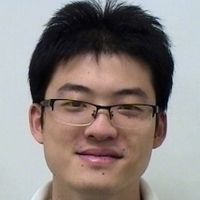Menu
- Undergraduate
- Graduate
- Foreign Study
- Research
- Inclusivity
- News & Events
- People
Back to Top Nav
Back to Top Nav
Back to Top Nav
Back to Top Nav
Back to Top Nav
Title: "Electron Magnetic Resonance of Phosphorous Doped Silicon under Optical Illumination"

Abstract: Phosphorus-doped silicon (Si:P) is a technologically important material in quantum applications, as the donor spins have some of the longest coherence times observed for any solid-state spin system. Electron paramagnetic resonance (EPR) has been used extensively to study the spin physics of the Si:P system, especially at low magnetic fields. Electrically detected magnetic resonance (EDMR) allows us to detect much smaller numbers of spin and to build electronic devices. Yet, EDMR typically requires optical excitation whose effects have not been well studied. This thesis explores the effects of optical excitation in three distinct experimental regimes: i) continuous wave (cw) - EDMR at low magnetic field (< 1 T); ii) cw-EPR/EDMR at the high magnetic field (3.34 T and 8.5 T); and iii) pulsed EPR at the high magnetic field (8.5T).
At low magnetic fields, we found that the EDMR signal primarily arises from spin-dependent recombination (SDR) of donor-defect pairs with near infrared excitation, while at higher photon energies there are significant additional contributions from SDR of defect-defect pairs. At longer wavelengths, the contribution of defect spins adjacent to the buried oxide layer increased due to the increased penetration into the device. In this regime, careful tuning of the optical excitation energy allows us to control both the SDR dynamics and to characterize depth-dependent features of the EDMR signal. At higher magnetic fields, using EDMR at 3.34 T and EPR at 8.5 T EPR, we observed a negative nuclear spin polarization in highly doped Si:P samples without light excitation. Although the exact mechanism of this negative hyperpolarization is not clear, our data show that the magnitude of the hyperpolarization increases with doping concentration. Under light excitation, the magnitude of this hyperpolarization was observed to increase. Finally, in pulsed EPR measurements at 8.5 T, we discovered that above bandgap optical excitation actually increased the phase memory time of the donor electron spin, as measured in a two-pulse Hahn echo experiment. The optical excitation thus suppresses spectral diffusion due to adjacent silicon-29 nuclear spins in the lattice, the dominant factor limiting phase memory times in natural abundance silicon.
These studies suggest that the wavelength and intensity of the optical excitation can significantly modulate the physics of the Si:P spin system. By varying the conduction electron and phononic environments of the donor spins, optical excitation offers a form of reservoir engineering that can be used to both selectively prepare the spin system in a given state as well as enhance the coherence times of the spin.
Events are free and open to the public unless otherwise noted.